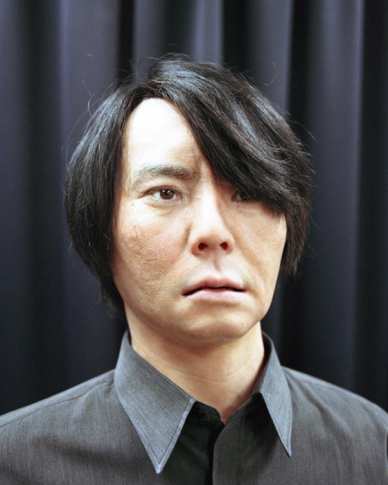Luisa Whitton
Luisa Whitton (* 1991) lebt und arbeitet in London. Die Arbeit “What about the Heart?“ begann sie 2011, sie schloss 2015 mit der Serie den Masterstudiengang Fotografie am London College of Photography ab. Luisa Whitton arbeitet mit Fotografie, Video und Text, um Konzepte des Unheimlichen innerhalb der Technologie zu ergründen.
Interview with Luisa Whitton
The topic of the festival is “Innere Sicherheit – the state I am in” – including political aspects of “Homeland Security” but also some very personal aspects. How do you relate to this topic? How do you understand your work in this context?
I think that ‘What about the Heart?’ shows the personal narrative of a scientist who, after experimenting on himself, by creating his own robotic copy, experiences a ‘state of being’ that is almost a side effect of this technology. Ishiguro’s story makes us question, how does our understanding of ourselves, our personal identity, change with the confrontation of robotics?
What is your opinion regarding robots and automation? (And do you think that has something to do with the culture or society in which you grew up?)
Robots were never part of my childhood, they were something I read about or watched in a film that I always found fascinating. But in Japan, robotics is a much bigger part of their culture. I am not so much interested in the technology specifically, but more how we interact to that technology, how we depend on it, or how it might change us in some way. I think what’s interesting about robotics is where did the idea come from to create a human-looking robot? What’s the core desire and reasoning behind wanting to create an object in our own image, it says more about ourselves and our own psychology than it does about technology or science.
The title of your work “What about the heart” indicates an emotional or human approach to robots. It that something you learned from Hiroshi Ishiguro the robotic engineer?
What’s interesting working with Hiroshi Ishiguro is that his research approach isn’t completely scientific; through dialogue I began to uncover a personal narrative and motive behind his research. And as an artist, I was fascinated with unpicking this fantastical, almost romantic notion of creating an object in your own image, and that created an interesting dialogue between the artist and the scientist.
